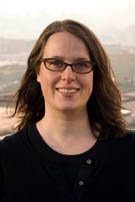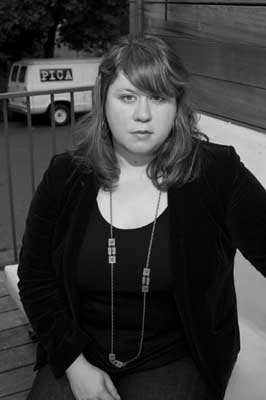The Arts Research Center at UC Berkeley is sponsoring the symposium “Curating People” on April 28 and 29, 2011. Participants have been invited to post some brief thoughts on the topic in advance of the event. This guest posting is by Constance Lewallen, Adjunct Curator at the Berkeley Art Museum.
Performance emerged as a new genre in contemporary art at the end of the 1960s. Alongside other new forms, such as video and installation, which developed contemporaneously as aspects or off shoots of Conceptual art and concurrent with the radical politics of the time, it was conceived as oppositional to the increasing commercialism of art and a way to break down boundaries between artist and audience, art and life, and to de-emphasize the art object in favor of the process of creation.
The San Francisco Bay Area rivaled New York in the amount of performance activity that took place in the seminal period between around 1967 and 1980. In the early years, Tom Marioni was the prime catalyst for performance, first as the curator at the Richmond Art Center from in the East Bay from 1968-1971, and then at his Museum of Conceptual Art (MOCA) founded in 1970 in San Francisco.
Mel Henderson, professor of art at San Francisco State College who had taken part in 1968 anti-Vietnam War marches on, drew on these experiences, as well as on Allen Kaprow’s Happenings, in staging with two fellow faculty members several spectacular political outdoor events.
In the mid-seventies, the collaborative Ant Farm similarly commanded public space for equally dramatic, political actions.
Berkeley was another locus of performance activity through such forward-looking curators as Brenda Richardson and Susan Rannells at the University Art Museum, Berkeley (now the UC Berkeley Art Museum and Pacific Film Archive). In its temporary quarters in the Power Plant Gallery Terry Fox enacted his notorious “Defoliation” during the reception for the provocative exhibition “The Eighties.”
The new museum building on Bancroft Avenue opened its doors in November, 1970, with Anna Halprin’s unclad dancers and an unscheduled performance by bunny-suited Paul Cotton as the Astral-Naught Rabb-Eye, in which he appeared to be in conversation with a George Segal plaster sculpture of a naked woman. The UAM presented performances, such as Tom Marioni’s Concert, Lecture, Demonstration in 1973. While musicians played, Marioni (as the artist), a dancer, a janitor, and an actor swept the floor to demonstrate how the same activity is altered according to intent. There were several other performances and performance series in the early seventies, including one devoted to women. David Ross, who followed Richardson as senior curator at the University Art Museum, continued a strong program in performance and video, curating, among other live events, Joan Jonas’s first major retrospective in 1980. Jim Melchert, a professor in the UC Berkeley’s art department, inspired such students as Theresa Hak Kyung Cha and Stephen Laub to explore the possibilities of performance.
Several early Bay Area performers, such as Linda Montano, Bonnie Sherk, Darryl Sapien, Lynn Hershman, Howard Fried, and T.R. Uthco (Doug Hall, Diane Andrews Hall and Jody Procter) acted on their own in claiming the street as a performance space. The subgenre of performance for the camera, pioneered by recent UC Davis graduate Bruce Nauman as early as 1967, was also widely practiced.
As the decade progressed, many alternative or nonprofit spaces—80 Langton Street, Southern Exposure, La Mamelle, Camerawork, Site, Artspace, Bluxome Street, Galleria de la Raza, The Farm, et al—opened to accommodate radical new forms of artistic expression unsuited for or ignored by existing institutions. By the end of the 1970s, one could attend a performance on one side of the bay or the other, almost every night of the week.
For the most part, however, commercial galleries and museums and galleries not connected to schools, were behind the curve. There were exceptions. The Reese Palley Cellar gallery, under the directorship of Carol Lindsley, was a site for non-traditional installations, such Marioni’s 1972 “The Creation,” in which he lived in a gallery for a week, making different kinds of action drawings each day. And, Suzanne Foley’s 1979 San Francisco Museum of Art exhibition and catalogueSpace/Time/Sound: A Decade in the Bay Area, remains, along with Carl Loeffler’s 1979 book Performance Anthology, a major source of Bay Area performance documentation. By 1979 the SF Art Institute, whose gallery was also a site for new genres, had created its Performance Video (now New Genres) department that included as faculty Paul Kos, Howard Fried, Doug Hall, Sharon Grace, and a bit later, their former student, Tony Labat.
Performance waned somewhat in the succeeding decades, but current interest in its development—viz the recent highly popular retrospective of Marina Abramovic at the New York Museum of Modern Art—has led to a resurgence of activity and debate about such issues as the value of reenactments and performance as a collectible commodity.






